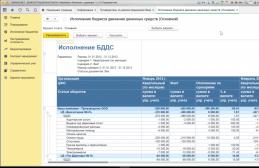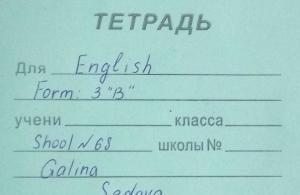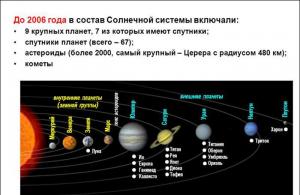MOSCOW, June 20 - RIA Novosti. The phenomenon of the appearance of so-called noctilucent clouds in the upper layers of the Earth's atmosphere may be associated with the ancient eruption of the Krakatoa volcano, says a joint report by Roscosmos and the Moscow Planetarium.
Noctilucent clouds are the highest cloud formations in the earth's atmosphere, occurring at altitudes of 70-95 kilometers. They are also called polar mesospheric clouds (PMC) or noctilucent clouds (NLC). These are light, translucent clouds that are sometimes visible against the dark sky on a summer night in middle and high latitudes.
"The fact that this atmospheric phenomenon was not observed until 1885 has led many scientists to believe that their appearance is associated with a powerful catastrophic process on Earth - the eruption of the Krakatoa volcano in Indonesia on August 27, 1883, when about 35 million tons were released into the atmosphere volcanic dust and a huge mass of water vapor. Other hypotheses have been expressed: meteoric, technogenic, and the “solar rain” hypothesis. But many facts in this area are still incomplete and contradictory, so noctilucent clouds continue to be an exciting problem for many naturalists,” noted in the message.
How noctilucent clouds form
Noctilucent clouds form in the upper layers of the atmosphere, at altitudes of about 90 kilometers, and are illuminated by the Sun, which has descended shallowly below the horizon (therefore, in the Northern Hemisphere they are observed in the northern part of the sky, and in the Southern Hemisphere - in the southern). For their formation, a combination of three factors is necessary: a sufficient amount of water vapor, a very low temperature, and the presence of tiny dust particles on which water vapor condenses, turning into ice crystals.
"When noctilucent clouds form, the centers of moisture condensation are likely to be particles of meteorite dust. Sunlight scattered by tiny ice crystals gives the clouds their characteristic bluish-blue color. Due to their high altitude, noctilucent clouds glow only at night, scattering sunlight , which falls on them from under the horizon. During the day, even against the background of a clear blue sky, these clouds are not visible: they are very thin, “ethereal”. Only deep twilight and night darkness make them noticeable to a ground-based observer, however, with the help of equipment. raised to high altitudes, these clouds can be recorded during the daytime. It is easy to see the amazing transparency of noctilucent clouds: the stars are clearly visible through them,” the researchers note.
Noctilucent clouds in the Northern Hemisphere
Noctilucent clouds can be observed only in the summer months in the Northern Hemisphere in June-July, usually from mid-June to mid-July, and only at latitudes from 45 to 70 degrees, and in most cases they are more often visible at latitudes from 55 to 65 degrees. In the Southern Hemisphere, they are observed at the end of December and in January at latitudes from 40 to 65 degrees. At this time of year and at these latitudes, the Sun, even at midnight, does not descend very deeply below the horizon, and its sliding rays illuminate the stratosphere, where noctilucent clouds appear at an average altitude of about 83 kilometers. As a rule, they are visible low above the horizon, at an altitude of 3-10 degrees in the northern part of the sky (for observers in the Northern Hemisphere). With careful observation, they are noticed every year, but they do not reach high brightness every year.
MOSCOW, June 20 - RIA Novosti. The phenomenon of the appearance of so-called noctilucent clouds in the upper layers of the Earth's atmosphere may be associated with the ancient eruption of the Krakatoa volcano, says a joint report by Roscosmos and the Moscow Planetarium.
Noctilucent clouds are the highest cloud formations in the earth's atmosphere, occurring at altitudes of 70-95 kilometers. They are also called polar mesospheric clouds (PMC) or noctilucent clouds (NLC). These are light, translucent clouds that are sometimes visible against the dark sky on a summer night in middle and high latitudes.
"The fact that this atmospheric phenomenon was not observed until 1885 has led many scientists to believe that their appearance is associated with a powerful catastrophic process on Earth - the eruption of the Krakatoa volcano in Indonesia on August 27, 1883, when about 35 million tons were released into the atmosphere volcanic dust and a huge mass of water vapor. Other hypotheses have been expressed: meteoric, technogenic, and the “solar rain” hypothesis. But many facts in this area are still incomplete and contradictory, so noctilucent clouds continue to be an exciting problem for many naturalists,” noted in the message.
How noctilucent clouds form
Noctilucent clouds form in the upper layers of the atmosphere, at altitudes of about 90 kilometers, and are illuminated by the Sun, which has descended shallowly below the horizon (therefore, in the Northern Hemisphere they are observed in the northern part of the sky, and in the Southern Hemisphere - in the southern). For their formation, a combination of three factors is necessary: a sufficient amount of water vapor, a very low temperature, and the presence of tiny dust particles on which water vapor condenses, turning into ice crystals.
"When noctilucent clouds form, the centers of moisture condensation are likely to be particles of meteorite dust. Sunlight scattered by tiny ice crystals gives the clouds their characteristic bluish-blue color. Due to their high altitude, noctilucent clouds glow only at night, scattering sunlight , which falls on them from under the horizon. During the day, even against the background of a clear blue sky, these clouds are not visible: they are very thin, “ethereal”. Only deep twilight and night darkness make them noticeable to a ground-based observer, however, with the help of equipment. raised to high altitudes, these clouds can be recorded during the daytime. It is easy to see the amazing transparency of noctilucent clouds: the stars are clearly visible through them,” the researchers note.
Noctilucent clouds in the Northern Hemisphere
Noctilucent clouds can be observed only in the summer months in the Northern Hemisphere in June-July, usually from mid-June to mid-July, and only at latitudes from 45 to 70 degrees, and in most cases they are more often visible at latitudes from 55 to 65 degrees. In the Southern Hemisphere, they are observed at the end of December and in January at latitudes from 40 to 65 degrees. At this time of year and at these latitudes, the Sun, even at midnight, does not descend very deeply below the horizon, and its sliding rays illuminate the stratosphere, where noctilucent clouds appear at an average altitude of about 83 kilometers. As a rule, they are visible low above the horizon, at an altitude of 3-10 degrees in the northern part of the sky (for observers in the Northern Hemisphere). With careful observation, they are noticed every year, but they do not reach high brightness every year.
Noctilucent clouds - what are they?
General information about noctilucent clouds.
Noctilucent clouds were first observed in 1885. Before this, there was no information about noctilucent clouds. The discoverer of noctilucent clouds is considered to be V.K. Tserasky, a private associate professor at Moscow University. He observed noctilucent clouds on June 12, 1885, when he noticed unusually bright clouds filling the twilight segment in the predawn sky. The scientist called them night luminous clouds. The scientist was especially surprised by the fact that the clouds stood out brightly against the background of the twilight segment, and completely disappeared when they went beyond its boundaries. He was very concerned about this because, without being visible, they could absorb starlight and distort the results of photometric measurements. But the very first measurements of luminous clouds showed that these clouds are very transparent and do not noticeably weaken the light of the stars. Noctilucent clouds form at altitudes from 73 to 97 km, with a maximum of 83-85 km, when the temperature drops to 150-165 K. Although this phenomenon is atmospheric, historically its studies are considered astronomical, since a number of phenomena in our atmosphere are so or otherwise associated with processes occurring on the Sun, with meteor showers. In addition, the study of the atmospheres of other planets is inextricably linked with the study of our own atmosphere. In addition, noctilucent clouds, unlike other clouds, are observed at night, and their observation and registration of their appearances can be carried out simultaneously with the observation of other astronomical phenomena or objects.
Noctilucent clouds can be observed from March to October in the northern hemisphere and from November to April in the southern hemisphere. But most often in the northern hemisphere they are observed from late May to mid-August (with a peak in June-July), in the southern hemisphere in the winter months.
The observation range is limited to latitudes from 50 to 65 degrees. But there are rare cases of their observation at lower latitudes - up to 45 degrees. In the book by V.A. Bronshten “Noctilucent clouds and their observation” provides data from a catalog of noctilucent clouds compiled by N.P. Fast based on 2000 observations for the years 1885-1964. This catalog gives the following distribution of observation points by latitude:
Latitude........................ 50...... 50-55..... 55-60..... 60 Number of observations (%)....... ..3.8 ......28.1 ......57.4 ......10.8
What is the reason for this? At this time, it is in these latitudes that favorable conditions are created for their visibility, since it is at these latitudes at this time that the Sun, even at midnight, descends shallowly below the horizon, and against the background of the twilight sky beautiful silvery formations are observed, the structure reminiscent of light cirrus clouds. This happens because they glow mainly with the reflected light of the Sun, although some of the rays they send may be generated in the process of fluorescence - the re-emission of energy received from the Sun at other wavelengths. In order for this to happen, the rays of the Sun must illuminate the noctilucent clouds. Knowing their average height above the earth's surface, it can be calculated that the sun's immersion should not exceed 19.5 degrees. At the same time, if the Sun has sunk less than 6 degrees, it is still too light (civil twilight), and clouds may not be visible in the bright sky. Thus, the most favorable conditions for observing noctilucent clouds correspond to the time of the so-called navigational and astronomical twilight, and the longer these twilights, the greater their likelihood. Such conditions are created in the summer at mid-latitudes. It is at mid-latitudes from late May to mid-August that noctilucent clouds are most often observed. True, this coincidence is purely accidental. In fact, noctilucent clouds form precisely in the summer and precisely in the middle latitudes because at this time at these latitudes there is a significant cooling in the mesopause, and the necessary conditions are created for the formation of ice crystals.
The first assumptions about the nature of noctilucent clouds were associated with the eruption of the Krakatoa volcano on August 27, 1883. In the twenties of the 20th century, L.A. Kulik, a researcher of the famous Tunguska meteorite, put forward a meteorite hypothesis for the formation of noctilucent clouds. Kulik also suggested that not only giant meteorites, but also ordinary meteors are the source of the formation of noctilucent clouds. The meteor hypothesis was popular for a long time, but could not answer a number of questions:
- Why do they appear in a narrow altitude range with an average value of 82-83 kilometers?
- Why are they observed only in summer and only in mid-latitudes?
- Why do they have a characteristic fine structure, very similar to that of cirrus clouds?
The answer to all these questions was given by the condensation (or ice) hypothesis. This hypothesis received serious justification in 1952 in the work of I.A. Khvostikov, who drew attention to the external similarity of noctilucent and cirrus clouds. Cirrus clouds are made up of ice crystals. I.A. Khvostikov suggested that noctilucent clouds have the same structure. But in order for water vapor to condense into ice, certain conditions are needed. In 1958 V.A. Bronshten gave an explanation for the seasonal and latitudinal effects of the appearance of noctilucent clouds by the fact that it is at middle latitudes in the summer season in the mesopause that the temperature drops to extremely low values of 150-165 K. Thus, I.A. Khvostikov’s hypothesis about the possibility of formation in this area atmosphere of noctilucent clouds was confirmed.
However, the researchers were faced with another question: does water vapor exist at such a high altitude in quantities sufficient to form noctilucent clouds? The work of scientists in this area has yielded unexpected results. A clear maximum of water vapor content was established in July-August and a minimum in January-February (in the northern hemisphere). That is, the fact of an increase in humidity in those seasons, over those latitudes and at the level where noctilucent clouds form, has been established. This fact has a simple explanation: above 25-30 kilometers at mid-latitudes in the summer, ascending air currents are observed that carry water vapor to the mesopause region. There the water vapor freezes, forming noctilucent clouds. Its deficiency is compensated by a new influx of steam from below. At other latitudes and in other seasons, upward air currents either do not arise or are suppressed by the absence of freezing. There is another explanation. It consists in the fact that water vapor at high altitudes is formed by the interaction of hydrogen atoms flying towards the Earth from the Sun with oxygen atoms of the upper layers of the Earth's atmosphere. This idea was expressed by the Norwegian scientist L. Vegard in 1933 and received quantitative substantiation in 1961 in the work of the French scientist C. de Tourville. True, this “solar rain” hypothesis has weaknesses and cannot fully explain the increased humidity in the mesopause. In recent years, some researchers have put forward another source of supplying the mesopause with water vapor. This hypothesis is supported, for example, by Iowa State University professor L. Frank, Russian scientist V.N. Lebedinets and some other scientists. They believe that the mesopause region supplies enough water vapor to form noctilucent clouds on the mini-comet. What particles serve as condensation nuclei in the formation of noctilucent clouds? Various assumptions have been made: particles of volcanic dust, crystals of sea salt, meteor particles. The hypothesis that it is meteoric particles that serve as condensation nuclei was put forward by L.A. Kulik in 1926 in his meteoric-meteorite hypothesis of the origin of noctilucent clouds. In 1950, this hypothesis was again independently put forward by V.A. Bronshten.
The hypothesis of the cosmic origin of condensation nuclei is now preferred. In fact, the destruction of meteoroids penetrating the earth's atmosphere and observed in the form of meteors occurs mainly just above the mesopause, at altitudes of 120-80 km. Research shows that up to 100 tons of matter “fall” on Earth every day, and the number of particles with a mass of 10 grams suitable as condensation nuclei is quite enough to ensure the formation of noctilucent clouds. Attempts have been made to find a connection between the appearance of noctilucent clouds and the intensity of meteor showers.
Structure of noctilucent clouds.
In 1955 N.I. Grishin proposed a morphological classification of the forms of noctilucent clouds. Later it became an international classification. The combination of different forms of noctilucent clouds formed the following main types:
Type I. Fleur, the simplest, even form, filling the space between more complex, contrasting details and having a foggy structure and a weak, soft white glow with a bluish tint.
 Type II. Stripes resembling narrow streams, as if carried away by air currents. They are often located in groups of several, parallel to each other or intertwined at a slight angle. The stripes are divided into two groups - blurred (II-a) and sharply defined (II-b).
Type II. Stripes resembling narrow streams, as if carried away by air currents. They are often located in groups of several, parallel to each other or intertwined at a slight angle. The stripes are divided into two groups - blurred (II-a) and sharply defined (II-b).
 Type III. Waves are divided into three groups. Scallops (III-a) - areas with a frequent arrangement of narrow, sharply defined parallel stripes, like light ripples on the surface of the water with a small gust of wind. Ridges (III-b) have more noticeable signs of a wave nature; the distance between adjacent ridges is 10–20 times greater than that of scallops. Wave-like bends (III-c) are formed as a result of the curvature of the cloud surface, occupied by other forms (stripes, ridges).
Type III. Waves are divided into three groups. Scallops (III-a) - areas with a frequent arrangement of narrow, sharply defined parallel stripes, like light ripples on the surface of the water with a small gust of wind. Ridges (III-b) have more noticeable signs of a wave nature; the distance between adjacent ridges is 10–20 times greater than that of scallops. Wave-like bends (III-c) are formed as a result of the curvature of the cloud surface, occupied by other forms (stripes, ridges).
 Type IV. Vortexes are also divided into three groups. Small radius vortices (IV-a): from 0.1° to 0.5°, i.e. no larger than the lunar disk. They bend or completely curl stripes, combs, and sometimes flairs, forming a ring with a dark space in the middle, reminiscent of a lunar crater. Swirls in the form of a simple bend of one or more stripes away from the main direction (IV-b). Powerful vortex emissions of “luminous” matter away from the main cloud (IV-c); This rare formation is characterized by rapid variability of its shape.
Type IV. Vortexes are also divided into three groups. Small radius vortices (IV-a): from 0.1° to 0.5°, i.e. no larger than the lunar disk. They bend or completely curl stripes, combs, and sometimes flairs, forming a ring with a dark space in the middle, reminiscent of a lunar crater. Swirls in the form of a simple bend of one or more stripes away from the main direction (IV-b). Powerful vortex emissions of “luminous” matter away from the main cloud (IV-c); This rare formation is characterized by rapid variability of its shape.
But even within a type, noctilucent clouds are different. Therefore, in each type of clouds, groups are distinguished that indicate a specific structure of the clouds (blurry stripes, sharply defined stripes, ridges, crests, wavy bends, etc.). You can learn more about this classification of the forms of noctilucent clouds in the book by V.A. Bronshten "Noctilucent clouds and their observations." Usually, when observing noctilucent clouds, you can see several of their forms of different types and groups at once.
Types and methods of observing noctilucent clouds.
Studies of noctilucent clouds are necessary for a deeper understanding of the circulation of the Earth's atmosphere, as well as many processes occurring outside the Earth, on the Sun. It is possible that the weather on Earth depends not only on conditions in the troposphere, but also on the state of higher layers of the atmosphere. Observations of noctilucent clouds are different; their organization, methodology and implementation depend on the objectives. The following types of observations of noctilucent clouds can be distinguished:
- 1. Synoptic observations are systematic observations of the twilight segment with the aim of establishing the presence or absence of noctilucent clouds, and if they are visible, recording some characteristic features.
- 2. Study of the structure. Can be done through visual observation, photography or time-lapse filming.
- 3. Study of the movements of noctilucent clouds. Produced by photographing them sequentially or by slow-motion filming. A theodolite may be needed here.
- 4. Determination of heights. To solve this problem, you need to photograph noctilucent clouds at pre-agreed moments from two points separated by a distance of 20-0 km. The cameras must be the same in both cases. We need an accurate clock. To process observations you will need a special palette.
- 5. Photometry and polarimetry. Produced from photographs. But to perform these tasks, special devices are needed.
These are the main types of observations. Some of the above tasks can be performed using the same observations. The same photographs can be used to study the structure, movements, height determination and photometry of noctilucent clouds. The weather observer can take photographs of noctilucent clouds between recordings. The synoptic method is most suitable for amateur observations of noctilucent clouds. It involves patrolling the twilight segment, statistics of noctilucent clouds, description of their structure and brightness. In my work, I mainly used the synoptic method of observing noctilucent clouds. To study the structure of noctilucent clouds, a photographic method was used. The azimuth and height of noctilucent clouds above the horizon were also measured.
Just a few hundred years ago, the Earth was full of the unknown, and in order to paint over the blank spots, hypothetical aborigines with dog heads and human faces on their stomachs were drawn on geographical maps. Since then, mysteries on our planet have diminished. All the more interesting are those that modern science still cannot solve...
Sergey Sysoev

Polarization of Light Light is an electromagnetic wave. Polarization for electromagnetic waves is the phenomenon of directional oscillation of the electric and magnetic field strength vectors. Linear polarization is a special case of polarization when the oscillations of the electric field strength vector lie in the same plane

Today, lidar installations (LIDAR, English Light Identification, Detection and Ranging), in which a laser serves as the source of the light beam, are widely used to study the atmosphere. A small part of its radiation, scattered in the atmosphere, returns back and is captured by the receiver. This makes it possible to calculate the distance from the installation to the area of the atmosphere that scattered the signal from the time of arrival of the reflected signal. Pictured is the lidar of the Pierre Auger Observatory (Argentina)

The diagram clearly shows the principle of operation of the lidar installation. Unfortunately, the method has an insurmountable limitation: it requires a clear sky - in dense clouds the laser beam is lost almost completely

Noctilucent clouds form at an altitude of approximately 80 km, in the region bordering the meso- and thermosphere - the so-called mesopause. The mesosphere is cold—the temperature in it drops to -150°C. The thermosphere is characterized by very high temperatures - the air (if this monstrously rarefied substance can be called that) under the influence of solar radiation sometimes heats up to 1500 K. The concentration of gas molecules in the thermosphere is so low that the usual mechanisms for transferring thermal energy practically do not work, and the only way cool down - radiate energy. Noctilucent clouds “live” in such difficult conditions

The reason why noctilucent clouds are observed at night and not during the day is clear from the diagram above. While the observer is still in the “night territory”, noctilucent clouds fall into the sunlit zone;. Noctilucent clouds “love” not just the night, but the summer night. The reason is simple. Oddly enough, the upper mesosphere cools most strongly in the summer: the dynamics of air flows in the atmosphere are to blame for this. There are also no problems with crystallization centers - after all, microparticles of meteoric origin are actually present in the mesosphere
In June 1885, with an interval of several days, several European astronomers noticed an unusual phenomenon: strange clouds of a previously unseen structure, glowing in the evening or early morning twilight, when the Sun was below the horizon. In Germany, this phenomenon was observed by astronomers Otto Jesse and Thomas William Backhaus, in Austria-Hungary by Vaclav Laska, in Russia by Witold Karlovich Cerasky. Since all the first observations were made independently of each other, it would be unfair to consider one person the discoverer. Jesse and Tserasky paid the most serious attention to the new phenomenon. The latter managed to establish with acceptable accuracy the height of the new clouds above the Earth's surface - about 75 versts. He was the first to establish the negligible optical density of clouds - the brilliance of the stars “closed” by them almost did not lose power! Jesse also carried out corresponding measurements, but with slightly less accuracy. But it was he who came up with the name that has become widespread since then - “silver clouds”. In English-language literature, this phenomenon is usually called noctilucent clouds or (especially in NASA materials) polar mesospheric clouds - PMC.
Conditions of existence
By the end of the 19th century, there were many astronomers in Europe who regularly observed the sky. Until the summer of 1885, none of them described anything resembling noctilucent clouds. Perhaps observations of clouds were not recorded in scientific history due to triviality? But by 1885, the same Witold Cerasky had already been engaged in photometry of the twilight sky for about ten years. This painstaking task required close attention to any clouds that could distort the data. Tserasky wrote: “It would be quite difficult for me not to notice a phenomenon that sometimes covers no more than the entire vault of heaven.” Otto Jesse shared the same opinion. Therefore, we will proceed from the fact that noctilucent clouds were actually not observed before the summer of 1885 and, probably, did not exist. Of course, attempts to explain the novelty of nature were made very quickly. The most logical explanation at that moment seemed to be the catastrophic eruption of the Krakatoa volcano on the territory of modern Indonesia, which led to a powerful explosion that literally lifted the entire island into the air. There were other theories - we will look at them below. But before we say anything about the noctilucent clouds themselves, it is worth paying attention to the conditions in which they exist.
The Earth's atmosphere is a complex object characterized by various conditions. By height, it is usually divided into the troposphere (up to 10 km), stratosphere (10−50 km), mesosphere (50−85 km), thermosphere and exosphere. Noctilucent clouds form in the region bordering the meso- and thermosphere - the so-called mesopause.
The physical conditions above and below the mesopause are different. The mesosphere is cold—the temperature in it drops to -150°C. The thermosphere, on the contrary, is characterized by very high temperatures - the air under the influence of solar radiation sometimes heats up to 1500K. The concentration of gas molecules in the thermosphere is so low that the usual mechanisms for transferring thermal energy do not work, and the only way to cool down is to radiate energy.
Now imagine what kind of clouds can appear in such “harsh” conditions? Ordinary cirrocumulus clouds “live” in the troposphere, at an altitude of 5-6 km, and are something like water fog. A cloud that can form at an altitude of 70 km can be compared to a person who has adapted to existence without protective equipment, for example, on Jupiter...
Where did they come from?
Above we mentioned the volcanic hypothesis of the formation of noctilucent clouds, proposed by the German physicist Friedrich Kohlrausch at the end of the 19th century. Alas, subsequent studies showed that the properties of clouds and the properties of volcanic aerosols suspended in the atmosphere are very different.
In the 1920s, meteorite researcher Leonid Kulik proposed a hypothesis of the meteorite origin of noctilucent clouds - according to it, they consist of tiny particles of meteorite matter dispersed in the upper layers of the atmosphere. Indeed, studies of the mesosphere by meteorological rockets back in the 1960s showed that noctilucent clouds contain a certain amount of substance clearly of meteorite origin. But by that time another theory was already in the scientific mainstream - the condensation theory, which was started by the Soviet physicist Ivan Andreevich Khvostikov.
An important feature of noctilucent clouds is that they are observed from year to year at the same altitudes (about 80 km), the same latitudes (50−70 degrees) and only in the summer, and all these rules are followed in the North , and in the Southern Hemispheres. Neither volcanic nor meteoric hypotheses could explain these facts. The condensation theory suggests that noctilucent clouds are composed of tiny ice crystals frozen onto aerosol particles. The zone where these nano-ice flakes appear is at an altitude of about 90 km, from there they gradually drift downward under the influence of gravity, increasing in size. At an altitude of about 85 km, their clusters become visible at dusk when illuminated by the sun from below - clouds appear. For the formation of such ice floes, at least three conditions are needed: low temperature, sufficient humidity and the presence of crystallization centers.
The biggest problem is air humidity. The upper kilometers of the mesosphere are drier than the Sahara - there is negligible water there and it comes there mainly from two sources. This is, firstly, water vapor from below, and secondly, the destruction of methane molecules under the influence of solar ultraviolet radiation, after which water is formed with the participation of atmospheric oxygen. The difficulty is that water molecules also disintegrate under the influence of solar radiation - their average life time in mesopause is several days. It is not yet completely clear as to under what conditions and in what time frame a sufficient amount of water can accumulate in the mesopause, therefore, while the condensation version is plausible, the question is far from closed.
Study Tools
Studying noctilucent clouds is not easy. The air above the stratosphere is so rarefied that neither an airplane nor a balloon can stay in it; the only aircraft capable of reaching such heights is a rocket. This creates considerable inconvenience for researchers: a rocket flying at high speed is in the studied area for a few seconds and has very limited contact with the environment. Its launch is not possible from anywhere and is quite expensive.
In the first half of the 20th century, it was proposed to use optical sensing to study the atmosphere. At first, a powerful spotlight was used for this. The observed scattering of the light beam provided information about the composition and state of air masses. In the USA, searchlight sounding was used mainly to determine air density and temperature; in the USSR, the study of atmospheric aerosols was also considered an important task, for which the searchlight beam was polarized and then the distribution of polarization with height was studied. Of course, the searchlight as a light source was not very convenient - the sounding ceiling never exceeded 70 km.
Since the 1960s, so-called lidar systems, in which a laser is the source of the light beam, have been increasingly used to study the atmosphere. A small part of its radiation, scattered in the atmosphere, returns back and is captured by the receiver. Laser radiation is coherent, its wavelength and polarization can be determined with great accuracy. The laser beam can be emitted for a period of time determined with high accuracy. This sets the length of the light beam. This allows the time of arrival of the reflected signal to be used to calculate the distance from the installation to the area of the atmosphere that scattered the signal with an accuracy of several meters. Well, the characteristics of reflected (scattered) radiation carry information about the environment from which it was reflected.
The second important tool is the study of light polarization. The fact that the sunlight we see is polarized was discovered by Francois Arago back in 1809; he also established that the maximum polarization is at an angular distance of 90 degrees from the Sun. The degree of polarization of light is influenced by the properties of the medium on which it is scattered. This is what the method is based on. What is especially remarkable is that at twilight, when the Sun below the horizon illuminates the earth’s atmosphere from below, polarimetry provides information about the properties of a particular layer of air that is brightest at that moment. Thus, by measuring polarization during twilight, the distribution of properties over height can be obtained.
With the beginning of the space age, the question arose that noctilucent clouds could be observed from space. The first apparatus created specifically for research of the mesosphere and noctilucent clouds was the American satellite AIM (The Aeronomy of Ice in the Mesosphere), launched in 2007 and still operating in orbit.
...and the Tunguska meteorite
The most famous case of mass observation of noctilucent clouds occurred in the summer of 1908, immediately after the fall of the Tunguska meteorite and, logically, in connection with it. “White nights” began almost throughout Europe because of luminous clouds, even where no one had ever heard of them. Eyewitnesses recalled that there was enough light in the middle of the night to read a newspaper. Unfortunately, almost no reliable instrumental measurements have been carried out, and modern estimates differ greatly - the illumination of those nights is estimated to be 10-8000 times higher than the natural background.
Contemporaries, as a rule, did not associate unusual clouds with the Tunguska meteorite, since they did not know about its existence. The very fact of the fall of some celestial body somewhere in the Yenisei province was known - they even tried to look for it, but scientists were able to assess the true scale of what happened only two decades later. In addition, it was in those places that no atmospheric anomalies, at least obvious ones, were observed. The night illumination was explained by volcanism, which sounded plausible at that time.
From the point of view of today's ideas, the noctilucent clouds of the summer of 1908 are still more likely associated with Tunguska - but how? Although there are about a hundred versions of what happened in 1908, scientists have the greatest confidence in two: meteorite and comet. Meteorite stumbles upon a fundamental problem - where did the pebble go? Comet seems better in all respects, but the appearance of noctilucent clouds within it seems difficult to explain. The substance dispersed in the atmosphere should have flown away from Vanavara to the east, and noctilucent clouds would have been visible in Vladivostok and Tokyo - but nothing like that happened. In addition, the size of the cometary “aura” reaches hundreds of thousands and sometimes millions of kilometers. Approaching the Earth approximately from the direction of the Sun, the tailed guest should have deposited dust in the atmosphere a couple of days before the fall, and the rotation of the Earth would have distributed all the matter evenly around the circumference in a completely natural way.
So it turns out that the mysterious Tunguska phenomenon significantly increases the number of questions about noctilucent clouds. 125 years after privatdozent Witold Karlovich Tserasky saw unusual clouds in the sky in the morning, we still cannot say with certainty that we understand where and how they came from.








